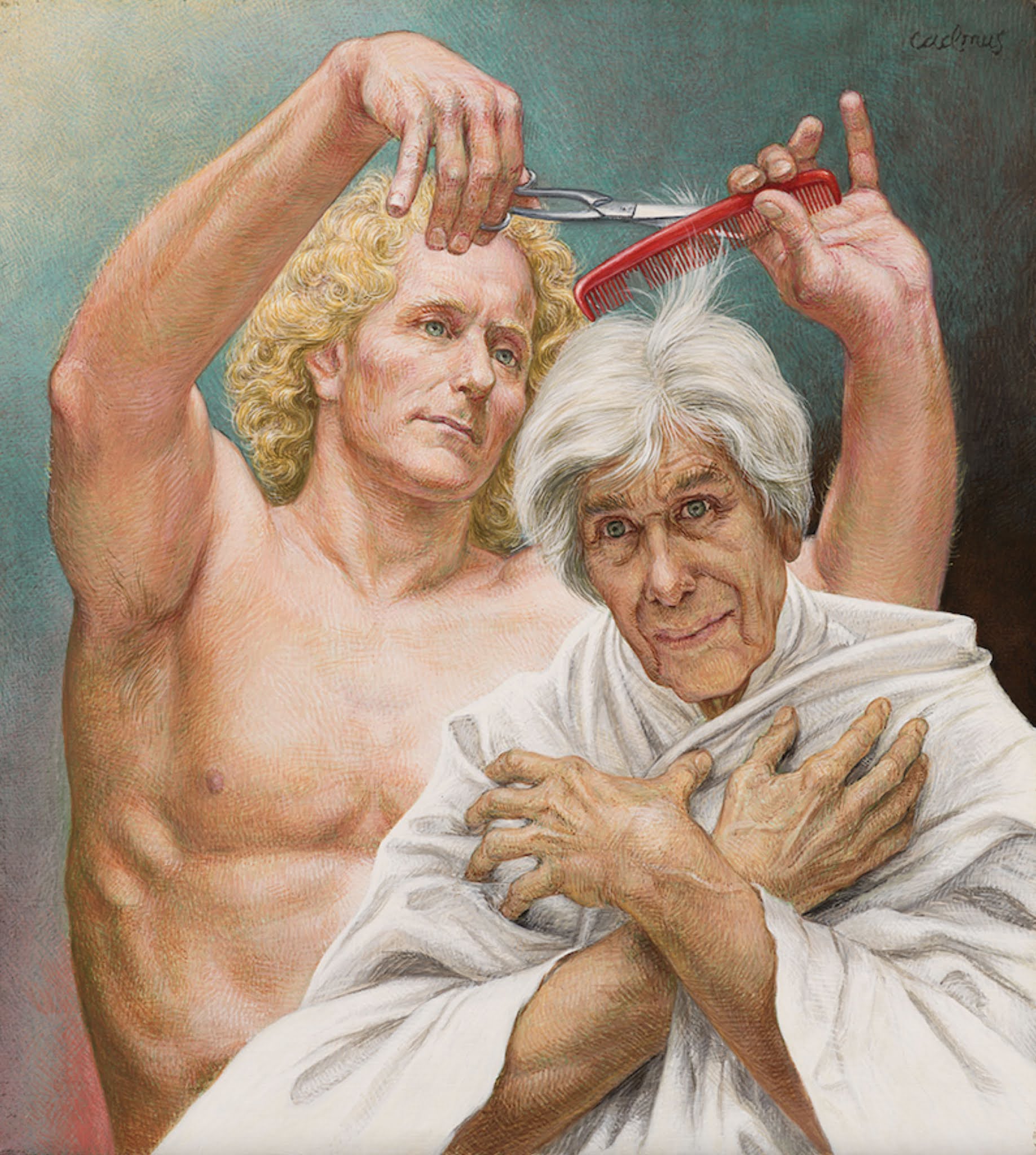 |
| Diego Rivera, Opponent of Nazism, 1933. Lucas Museum of Narrative Art |
The Lucas Museum of Narrative Art has acquired a fresco panel from a Diego Rivera mural, plus significant pieces by Paul Cadmus, Jacob Lawrence, Yinka Shonibare, and Charles White. As before, there is a notable concentration of African-Americans working in a figurative mode, now supplemented with some contemporary Latinx artists. Not that the Lucas doesn't still have the treacle market covered. Other acquisitions span
Star Wars conceptuals to comic books (a Jack Kirby
Black Panther, no less). What other museum would pay
$1 million-plus for a German Beidermeier painting of a dragon?
Despite being thwarted in
a hail-Mary bid to buy Rivera's Making of a Fresco from the San Francisco Art Institute, the Lucas succeeded in acquiring one panel of another prime 1930s mural.
Opponent of Nazism is one of 21 panels (8 surviving) of the
Portrait of America mural made for New York's New Workers School. It followed Rivera's ill-fated mural commission for Rockefeller Center, destroyed by the Rockefeller family after the artist included a portrait of Vladimir Lenin. Perhaps in reaction, Rivera made the New Workers School mural portable, composed of distinct panels. The panels have been scattered around the world,
the largest in Nagoya, Japan. The Lucas panel, about 34 inches square, presents a Communist worker as an opponent of the Nazis.
 |
| Charles White, Presentation Study for Mary McLeod Bethune Mural, 1977-1978 |
Speaking of murals, the Lucas now owns a small autograph replica of Charles White's
Mary McLeod Bethune Mural. The full-size original was commissioned for L.A.'s Bethune Regional Library, only blocks away from the Lucas Museum site in Exposition Park. The Lucas' acrylic on board version, 36.5 in. across, was
shown at David Zwirner in 2019.
 |
| Paul Cadmus, The Haircut, 1986 |
A late Paul Cadmus self-portrait shows the aged gay artist getting a haircut from a ripped, though middle-aged friend. The white-draped, preternaturally lighted Cadmus evokes
Zurburán's Saint Serapion.
The Haircut becomes the second Cadmus painting in a local collection, after
LACMA's Coney Island made 52 years earlier.
 |
| Criselda Vasquez, The New American Gothic, 2017 |
Criselda Vasquez'
The New American Gothic transcends the jokey premise (which kind of rhymes with
another recent acquisition, actually). The subjects are the artists' hard-working parents.
New American Gothic was a viral hit on Instagram, leapfrogging the art market as gatekeeper.
 |
| Kadir Nelson, Art Connoisseurs, 2019 |
Kadir Nelson is one of the few 21st-century artists pursuing a Norman Rockwell career, doing magazine covers (
The New Yorker, especially) along with independent paintings.
Art Connoisseurs joins at least
one other Nelson painting in the Lucas collection.
 |
| Yinka Shonibare MBE, Crash Willy, 2009 |
The Lucas collection has expanded beyond U.S. borders to incorporate a Yinka Shonibare sculpture (
sold for £224,750 at Sotheby's in 2017) and a print by Edo goremeister
Utagawa Kuniyoshi of the "Sickly General Yuchi."  |
| Utagawa Kuniyoshi, Byo'utchi Sunritsu (Sun Li), 1827-1830 |
 |
| Jack Kirby (pencil) and Frank Giacoia (ink), Black Panther cover, 1977 |
Samurai swords also figure prominently in the Jack Kirby/Frank Giacoia illustration for Marvel Comics.
 |
| Carl Spitzweg, Der Hexenmeister, 1875-1880. |
Carl Spitzweg's
Der Hexenmeister ("The Sorcerer") is a truly awful painting of a wizard and dragon. The artist was influenced by the German Romantics and Böcklin and has some reputation in Germany. That must account for the recent auction price of $1.2 million for this small (19-inches high) painting existing in two other versions.
As
I wrote in 2018, the Lucas is buying legitimacy with a core of "serious" art, and there's nothing wrong with that. At the same time it seemingly can't
not collect dreck, sometimes paying high prices for it. Meanwhile it is assembling a collection of popular art forms (comics, magazine cover art, murals, movie concept art, etc.) that rarely gets its due anywhere else. This phase of the collection, more serious than its objects may pretend to be, is likely to be the Lucas' most significant contribution to L.A. and world culture.









Comments
The Spanish language in particular is so gender specific, with "o" at the end of a word often signifying the male form of a word, "a" being the female form, that I recall thinking, jeez, the creators of the Spanish language sure are sex (gender) obsessed.
Now the opposite extreme is being performed by today's anti-gender crowd aimed at the English language, etc. But they have their work cut out for them when it comes to Spanish.
> sometimes paying high prices for it.
The gatekeepers of today's cultural scene are increasingly so much into a form of de-elite-ing the nature of art, they'll hold two opposing ideas at the same time.
They'll both praise what can be called a pro-proletariat "anything goes," but also turn on a dime and prefer quality as it has fit a more traditional social and political definition.
So the Lucas will be both, yah!, it's for the masses, but also, boo!, it's for the masses too.
Sophisticated commentary begets garbage comments
They did not originate, however, with the Lucas Museum.
They started with the new LACMA building.
... Indeed, I suspect they expose the hidden agenda of the Save-LACMA mob.
As I said before, the Save-LACMA mob likes the encyclopedic museum as much as the Trump mob likes the border wall.